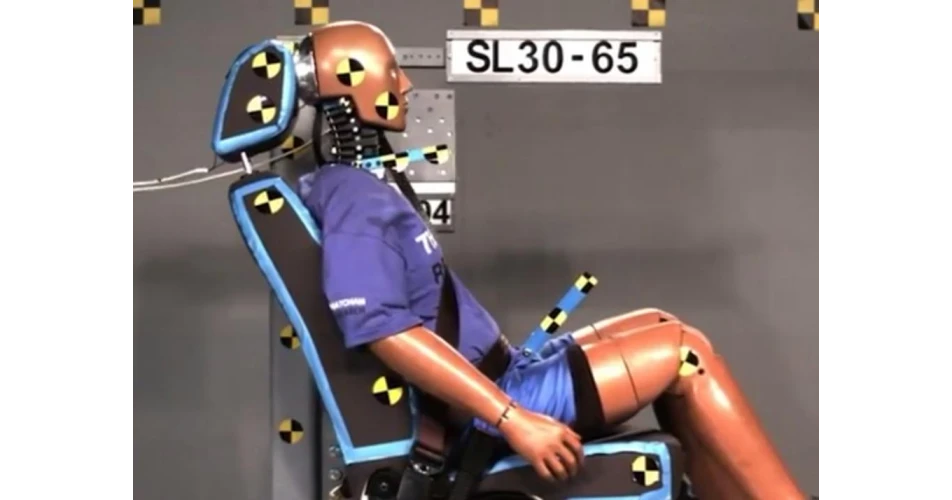A reactive head restraint and car seat system designed to reduce whiplash in rear-end vehicle collisions has been unveiled by engineers at Loughborough University.
The unique concept has been brought to life using linkage analysis which demonstrates how the head restraint and car seat react simultaneously, when the body of the occupant begins to push against the seat back during a rear-end collision.
During a rear-end collision, the head restraint adjusts itself to an elevated position and closer to the occupant’s head, while the car seat rotates rearwards in a controlled manner to limit the differential motion between the head and the torso. It is the integration of these two systems which has the potential to limit the relative motion between the head and torso, and the range of backward rotation of the head, therefore reducing the whiplash effect on the cervical spine.
Whiplash is soft tissue strain of the neck which is caused by a sudden movement of the head, mainly backwards. The most common whiplash injuries occur from rear impacts in car accidents at speeds of less than 25km/h. Whiplash claims are said to cost the insurance industry about £2 billion a year in the UK and are major headache to insurers in Ireland.
The combined reactive seat and head restraint system is designed to reduce the whiplash risk, in conjunction with a seat damper absorbing impact energy from the collision. It does this by reducing the relative motion between the head and the torso and bringing the head restraint closer to the head before whiplash can take effect. But it is the integration of these features which makes this concept so unique and effective.
Memis Acar, Professor of Mechanics comments, “There is currently no other product in the automotive market that integrates these concepts. What we are proposing is an affordable design which lends itself well to mass production for all car ranges. The use of mechanical linkages, which is not uncommon in some car seats, means that the whole system would be economical and easy to manufacture.”
